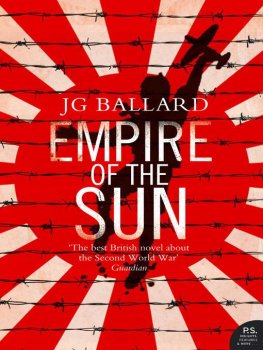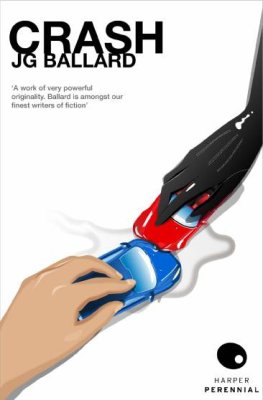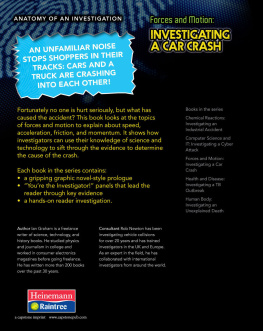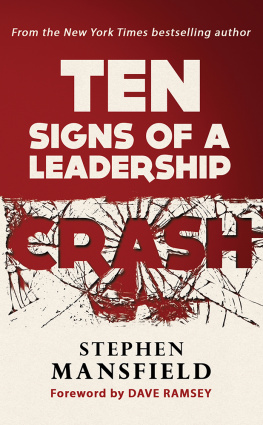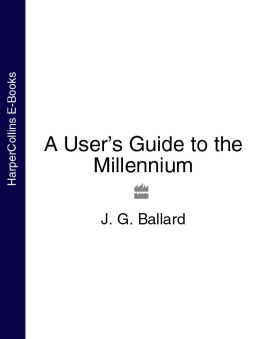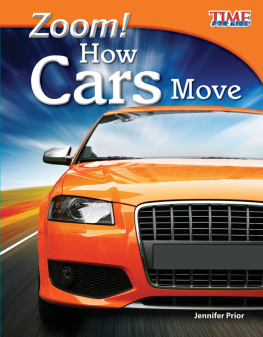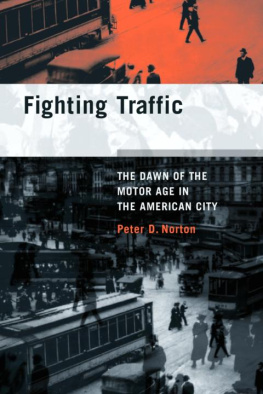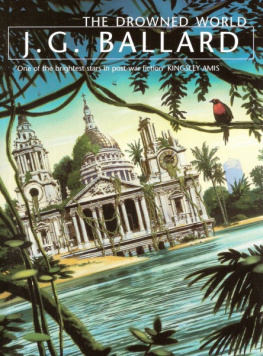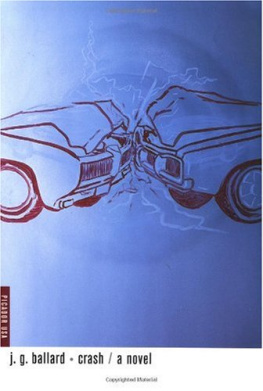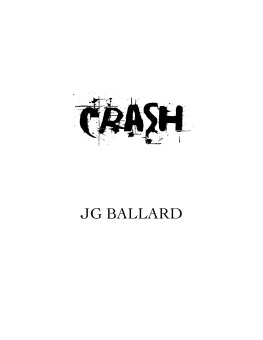
Vaughan died yesterday in his last car-crash. During our friendship he had rehearsed his death in many crashes, but this was his only true accident. Driven on a collision course towards the limousine of the film actress, his car jumped the rails of the London Airport flyover and plunged through the roof of a bus filled with airline passengers. The crushed bodies of package tourists, like a haemorrhage of the sun, still lay across the vinyl seats when I pushed my way through the police engineers an hour later. Holding the arm of her chauffeur, the film actress Elizabeth Taylor, with whom Vaughan had dreamed of dying for so many months, stood alone under the revolving ambulance lights. As I knelt over Vaughan's body she placed a gloved hand to her throat.
Could she see, in Vaughan's posture, the formula of the death which he had devised for her? During the last weeks of his life Vaughan thought of nothing else but her death, a coronation of wounds he had staged with the devotion of an Earl Marshal. The walls of his apartment near the film studios at Shepperton were covered with the photographs he had taken through his zoom lens each morning as she left her hotel in London, from the pedestrian bridges above the westbound motorways, and from the roof of the multi-storey car-park at the studios. The magnified details of her knees and hands, of the inner surface of her thighs and the left apex of her mouth, I uneasily prepared for Vaughan on the copying machine in my office, handing him the packages of prints as if they were the instalments of a death warrant. At his apartment I watched him matching the details of her body with the photographs of grotesque wounds in a textbook of plastic surgery.
In his vision of a car-crash with the actress, Vaughan was obsessed by many wounds and impacts by the dying chromium and collapsing bulkheads of their two cars meeting head-on in complex collisions endlessly repeated in slow-motion films, by the identical wounds inflicted on their bodies, by the image of windshield glass frosting around her face as she broke its tinted surface like a death-born Aphrodite, by the compound fractures of their thighs impacted against their handbrake mountings, and above all by the wounds to their genitalia, her uterus pierced by the heraldic beak of the manufacturer's medallion, his semen emptying across the luminescent dials that registered for ever the last temperature and fuel levels of the engine.
It was only at these times, as he described this last crash to me, that Vaughan was calm. He talked of these wounds and collisions with the erotic tenderness of a long-separated lover. Searching through the photographs in his apartment, he half turned towards me, so that his heavy groin quietened me with its profile of an almost erect penis. He knew that as long as he provoked me with his own sex, which he used casually as if he might discard it for ever at any moment, I would never leave him.
Ten days ago, as he stole my car from the garage of my apartment house, Vaughan hurtled up the concrete ramp, an ugly machine sprung from a trap. Yesterday his body lay under the police arc-lights at the foot of the flyover, veiled by a delicate lacework of blood. The broken postures of his legs and arms, the bloody geometry of his face, seemed to parody the photographs of crash injuries that covered the walls of his apartment. I looked down for the last time at his huge groin, engorged with blood. Twenty yards away, illuminated by the revolving lamps, the actress hovered on the arm of her chauffeur. Vaughan had dreamed of dying at the moment of her orgasm.
Before his death Vaughan had taken part in many crashes. As I think of Vaughan I see him in the stolen cars he drove and damaged, the surfaces of deformed metal and plastic that for ever embraced him. Two months earlier I found him on the lower deck of the airport flyover after the first rehearsal of his own death. A taxi driver helped two shaken air hostesses from a small car into which Vaughan had collided as he lurched from the mouth of a concealed access road. As I ran across to Vaughan I saw him through the fractured windshield of the white convertible he had taken from the car-park of the Oceanic Terminal. His exhausted face, with its scarred mouth, was lit by broken rainbows. I pulled the dented passenger door from its frame. Vaughan sat on the glass-covered seat, studying his own posture with a complacent gaze. His hands, palms upwards at his sides, were covered with blood from his injured knee-caps. He examined the vomit staining the lapels of his leather jacket, and reached forward to touch the globes of semen clinging to the instrument binnacle. I tried to lift him from the car, but his tight buttocks were clamped together as if they had seized while forcing the last drops of fluid from his seminal vesicles. On the seat beside him were the torn photographs of the film actress which I had reproduced for him that morning at my office. Magnified sections of lip and eyebrow, elbow and cleavage formed a broken mosaic.
For Vaughan the car-crash and his own sexuality had made their final marriage. I remember him at night with nervous young women in the crushed rear compartments of abandoned cars in breakers' yards, and their photographs in the postures of uneasy sex acts. Their tight faces and strained thighs were lit by his polaroid flash, like startled survivors of a submarine disaster. These aspiring whores, whom Vaughan met in the all-night cafes and supermarkets of London Airport, were the first cousins of the patients illustrated in his surgical textbooks. During his studied courtship of injured women, Vaughan was obsessed with the buboes of gas bacillus infections, by facial injuries and genital wounds.
Through Vaughan I discovered the true significance of the automobile crash, the meaning of whiplash injuries and roll-over, the ecstasies of head-on collisions. Together we visited the Road Research Laboratory twenty miles to the west of London, and watched the calibrated vehicles crashing into the concrete target blocks. Later, in his apartment, Vaughan screened slow-motion films of test collisions that he had photographed with his cinecamera. Sitting in the darkness on the floor cushions, we watched the silent impacts flicker on the wall above our heads. The repeated sequences of crashing cars first calmed and then aroused me. Cruising alone on the motorway under the yellow glare of the sodium lights, I thought of myself at the controls of these impacting vehicles.
During the months that followed, Vaughan and I spent many hours driving along the express highways on the northern perimeter of the airport. On the calm summer evenings these fast boulevards became a zone of nightmare collisions. Listening to the police broadcasts on Vaughan's radio, we moved from one accident to the next. Often we stopped under arc-lights that flared over the sites of major collisions, watching while firemen and police engineers worked with acetylene torches and lifting tackle to free unconscious wives trapped beside their dead husbands, or waited as a passing doctor fumbled with a dying man pinned below an inverted truck. Sometimes Vaughan was pulled back by the other spectators, and fought for his cameras with the ambulance attendants. Above all, Vaughan waited for head-on collisions with the concrete pillars of the motorway overpasses, the melancholy conjunction formed by a crushed vehicle abandoned on the grass verge and the serene motion sculpture of the concrete.
Once we were the first to reach the crashed car of an injured woman driver. A middle-aged cashier at the airport duty-free liquor store, she sat unsteadily in the crushed compartment, fragments of the tinted windshield set in her forehead like jewels. As a police car approached, its emergency beacon pulsing along the overhead motorway, Vaughan ran back for his camera and flash equipment. Taking off my tie, I searched helplessly for the woman's wounds. She stared at me without speaking, and lay on her side across the seat. I watched the blood irrigate her white blouse. When Vaughan had taken the last of his pictures he knelt down inside the car and held her face carefully in his hands, whispering into her ear. Together we helped to lift her on to the ambulance trolley.
Next page


